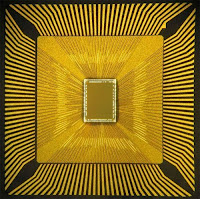The challenge in training a computer to behave like a human brain is technological and physiological, testing the limits of computer and brain science. But researchers from IBM Corp. say they've made a key step toward combining the two worlds.
IBM announced yesterday that it has received $21 million in funding from the Defense Advanced Research Projects Agency (DARPA) to develop a series of experimental computer chips designed to replicate the human brain’s perceptive, active and cognitive abilities.
According to IBM, the “neurosynaptic” chips “recreate the phenomena between spiking neurons and synapses in biological systems, such as the brain, through advanced algorithms and silicon circuitry” — meaning that they can be used to build complex, multi-sensory learning systems (“cognitive computers”) that behave more like human brains than calculators.
These computers will be able to learn through experiences, detect patterns and develop hypotheses, as well as remember and learn from the outcomes.
IBM and its partners even think the computers will be able to rival the brain’s compact size and relatively low power usage. The team’s long-term goal is to build a system with 10 billion neurons and 100 trillion synapses that is less than two liters in volume and consumes merely one kilowatt of power. To do so, they’ll need to abandon traditional Von Neumann architecture in favor of more efficient architecture that does away with set programming and integrates memory and processors.
The chips will be particularly advantageous in processing and reacting to information from multiple sensory modes in real time. IBM describes two potential use cases, one in which a system monitoring the world’s water supply could record and report metrics such as temperature, pressure, wave height, acoustics and ocean tide, and issue tsunami warnings based on its decision making; and another in which a grocer stocking shelves could use an instrumented glove that monitors sights, smells, texture and temperature to flag bad or contaminated produce.
“This is a major initiative to move beyond the von Neumann paradigm that has been ruling computer architecture for more than half a century,” observes Dharmendra Modha, project leader for IBM Research. “Future applications of computing will increasingly demand functionality that is not efficiently delivered by the traditional architecture. These chips are another significant step in the evolution of computers from calculators to learning systems.”To learn more, watch IBM researchers John Arthur and Paul Merolla describe the inspiration for the project (called “SyNAPSE”) below, and/or check out research.ibm.com.

Post a Comment